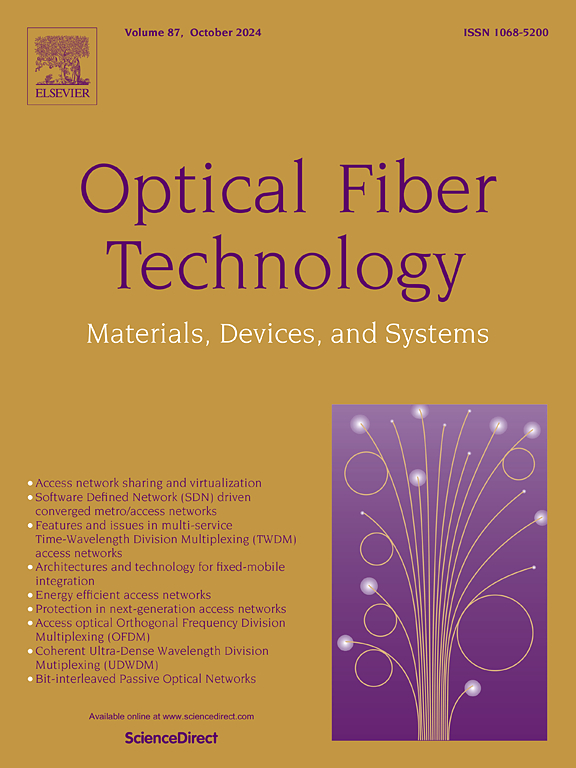An interferometric optical fiber sensor based on ion-imprinted sodium alginate for Pb(II) detection
IF 2.6
3区 计算机科学
Q2 ENGINEERING, ELECTRICAL & ELECTRONIC
引用次数: 0
Abstract
A kind of Pb2+ optical fiber sensor is demonstrated with high sensitivity, good linear responding, and simple fabrication. The Fabry-Perot interference structure is composed of single-mode optical fiber, glass capillary and hydrogel. Sodium alginate crosslinks with PbCl2 to form lead alginate hydrogel by ion-imprinted method. The typical sensor is tested in solutions with different concentrations by Pb2+ responding experimental system. The sensitivity of sensor to Pb2+ detection within the concentration range of 0 to 2.5 mg/L is 1.78475 nm/(mg/L), with a linearity of 0.983. The effect of sodium alginate concentration on sensor response were investigated. With increased sodium alginate mass fraction, the sensor sensitivity decreased. The sensor temperature sensitivity was also investigated. Compared with Pb2+ responding, low temperature sensitivity cannot cause significant cross-responding impact. The repeatability of sensor was tested by six repeated measurements after deionized water desorption. The experiment results showed good repeatability for Pb2+ responding. The responding selectivity is tested by responding experiments of different other icons, such as Cu2+, Cr3+, Mn2+, Fe3+, and Zn2+. The experiments results showed that the Pb2+ responding sensitivity is much higher.
求助全文
约1分钟内获得全文
求助全文
来源期刊

Optical Fiber Technology
工程技术-电信学
CiteScore
4.80
自引率
11.10%
发文量
327
审稿时长
63 days
期刊介绍:
Innovations in optical fiber technology are revolutionizing world communications. Newly developed fiber amplifiers allow for direct transmission of high-speed signals over transcontinental distances without the need for electronic regeneration. Optical fibers find new applications in data processing. The impact of fiber materials, devices, and systems on communications in the coming decades will create an abundance of primary literature and the need for up-to-date reviews.
Optical Fiber Technology: Materials, Devices, and Systems is a new cutting-edge journal designed to fill a need in this rapidly evolving field for speedy publication of regular length papers. Both theoretical and experimental papers on fiber materials, devices, and system performance evaluation and measurements are eligible, with emphasis on practical applications.
 求助内容:
求助内容: 应助结果提醒方式:
应助结果提醒方式:


